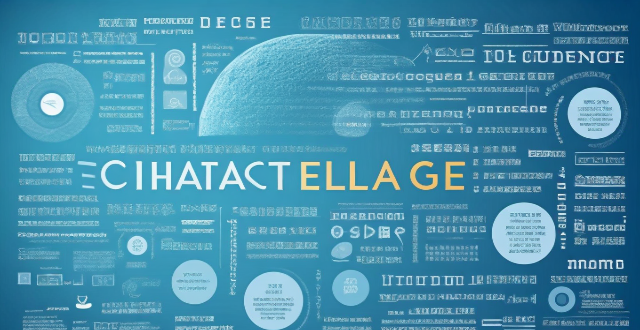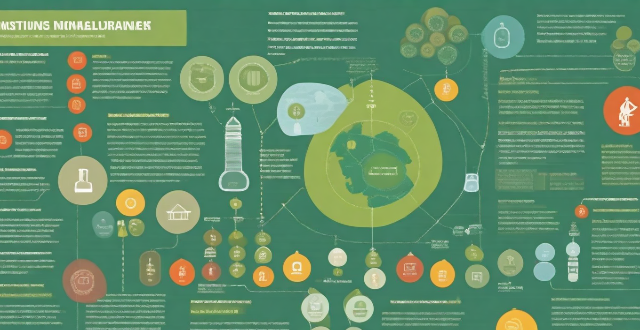War Consensus

What are the main arguments of climate skeptics ?
This text discusses the main arguments presented by climate skeptics, who challenge the scientific consensus on human-caused global warming. Their arguments include natural variability, lack of consensus among scientists, unreliable computer models, economic concerns, policy misuse, CO2 benefits, absence of catastrophes, historical warming, stable temperature claims, and personal freedoms. Despite these arguments, most climate scientists disagree with these views due to extensive supporting evidence.

How do climate skeptics refute the evidence of global warming ?
The text discusses the arguments put forward by climate skeptics and examines their validity in light of current scientific knowledge. The main points covered include: - Misinterpretation of data: Climate skeptics often misinterpret or selectively choose data to support their claims, focusing on short-term fluctuations rather than long-term trends. However, when all available data is considered, it becomes clear that global temperatures have been rising steadily over the past century. - Natural variability: Climate skeptics argue that natural factors such as changes in solar radiation or volcanic activity can explain the observed warming trend without human intervention. However, these factors cannot account for the rapid increase in temperatures seen over the past few decades, and even when included in models, human activities remain the primary driver of global warming. - Alternative explanations: Some climate skeptics propose alternative explanations for the observed warming trend, such as changes in ocean currents or atmospheric circulation patterns. However, these theories lack empirical evidence and fail to explain many of the observed changes in our climate system. - Economic motives: Some climate skeptics may have economic motives for their views, such as fossil fuel companies and other industries that rely on carbon-intensive practices. By casting doubt on the scientific consensus around global warming, these groups hope to delay action on climate change and preserve their profits. Overall, the text concludes that while there may be legitimate debates around specific aspects of climate science, the overwhelming majority of scientists agree that human activities are contributing to global warming. Climate skeptics' arguments do not hold up under scrutiny, and it is crucial that we continue to invest in research and take action to mitigate the effects of climate change before it is too late.

How does blockchain differ from traditional databases ?
Blockchain technology and traditional databases are two different systems for storing and managing data. While they share some similarities, there are several key differences between the two. In this article, we will explore these differences in detail. One of the most significant differences between blockchain and traditional databases is the level of decentralization. Traditional databases are typically centralized, meaning that they are managed by a single entity or organization. On the other hand, blockchain is a decentralized system where data is stored across multiple nodes in a network. Another key difference between blockchain and traditional databases is immutability. Once data is added to a block in a blockchain, it cannot be changed or deleted. This is in contrast to traditional databases, where data can be modified or deleted by authorized users. Blockchain uses a consensus mechanism to validate transactions and add new blocks to the chain. This is different from traditional databases, which rely on a central authority to validate transactions and make changes to the database. Blockchain technology also supports smart contracts, which are self-executing contracts with the terms of the agreement between buyer and seller being directly written into lines of code. Traditional databases do not support this feature. In conclusion, while blockchain and traditional databases share some similarities, there are several key differences between the two systems. Blockchain's decentralization, immutability, consensus mechanism, and support for smart contracts make it a unique and powerful tool for managing data in various industries.

What is blockchain technology and how does it work ?
Blockchain technology is a decentralized, digital ledger that records transactions securely and transparently. It was originally designed for Bitcoin but has since been adapted for various applications. Key features include decentralization, transparency, immutability, and security. The technology works through transaction creation, broadcast, verification, block creation, consensus, addition to the blockchain, and perpetuation. Benefits include enhanced security, elimination of intermediaries, increased transparency, reduced costs, and improved efficiency. Blockchain technology has potential applications beyond cryptocurrency and could transform industries such as finance and supply chain management.

How does blockchain ensure decentralization and transparency ?
Blockchain technology ensures decentralization and transparency through a distributed ledger, consensus mechanisms like Proof of Work (PoW), Proof of Stake (PoS), and Delegated Proof of Stake (DPoS), node autonomy, immutable records via cryptographic hashing, public accessibility of the ledger, verifiable transactions using digital signatures, and smart contracts. These features create an environment resistant to manipulation and corruption, offering a paradigm shift in secure and accountable digital interactions.

What is blockchain technology and how does it relate to cryptocurrency ?
Blockchain technology is a decentralized, distributedBlockchain technology is a decentralized, distributed transactions in a secure and im It is the foundational structure for cryptocurrencies, which are digital or virtual currencies that use cryptography for security and operate independently of a central bank. The key features of blockchain include decentralization, immutability, transparency, and security. Cryptocurrencies rely on blockchain technology to maintain a transparent and secure system for recording transactions without intermediaries like banks. Transactions are validated by network participants through consensus algorithms like Proof of Work (PoW) or Proof of Stake (PoS), and new coins can be issued as rewards for those who validate transactions and maintain the network. Overall, blockchain technology enables a peer-to-peer electronic cash system that is both secure and decentralized.

Are there any reputable scientists who support the views of climate skeptics ?
The text discusses the topic of climate change and whether there are reputable scientists who support the views of climate skeptics. It mentions that while there may be scientists who express skepticism about certain aspects of climate change, it is rare to find reputable scientists who entirely reject the consensus view on anthropogenic climate change. The text provides information on three scientists who have been critical of certain aspects of climate change, but notes that their views are often disputed within the scientific community. The text concludes by stating that the overwhelming majority of scientific evidence supports the idea that human activities are contributing significantly to global warming, and that it is essential to rely on comprehensive reviews of scientific literature and consensus reports from authoritative bodies like the Intergovernmental Panel on Climate Change (IPCC) for the most accurate understanding of climate change and its implications.

How does cryptocurrency work ?
Cryptocurrency is a digital or virtual currency that uses cryptography for security, operating independently of a central bank. It allows direct transfers between individuals without intermediaries like banks. Key components include cryptography (public and private keys, encryption, decryption), blockchain technology (decentralization, transparency, immutability, consensus mechanism), mining (Proof of Work, Proof of Stake, mining rewards, network security), and smart contracts (automation, efficiency, security, transparency). These technologies work together to create a secure, decentralized, and transparent digital payment system with fast, low-cost, and borderless transactions while maintaining user privacy and security.

How has environmental legislation evolved over time ?
Environmental legislation has evolved over time, reflecting growing awareness of environmental issues. Early stages focused on preserving natural resources and conserving wildlife habitats, while post-World War II saw a shift towards pollution control through air and water quality regulations. The late 20th century introduced comprehensive environmental protection laws addressing multiple aspects of environmental degradation. Today's legislation prioritizes sustainable development and climate change mitigation, with a focus on public participation and transparency in decision-making processes.

How can we convince skeptics about the importance of climate action ?
The text discusses the importance of convincing skeptics about the urgency and effectiveness of climate action. It outlines strategies such as providing accessible information, highlighting economic and health benefits, sharing personal stories, supporting beneficial policies, and using visual tools to illustrate potential future scenarios. The goal is to address misinformation, perceived economic concerns, and lack of trust in scientific consensus, ultimately aiming to build a broader coalition committed to combating climate change.

What are the most effective strategies for implementing climate decisions ?
Effective strategies for implementing climate decisions include developing a clear vision and goals, building a multi-stakeholder coalition, creating an action plan, implementing policies and regulations, fostering innovation and technology development, engaging the public and building consensus, and monitoring progress. These steps require careful planning, collaboration, and ongoing evaluation to address the urgent challenge of climate change and create a more sustainable future for all.

How do climate skeptics explain extreme weather events in the context of climate change ?
Climate skeptics present alternative explanations for extreme weather events, often challenging the scientific consensus on climate change. They argue that such events are part of natural variability, unrelated to human activities. Skeptics question the interpretation of climate data, suggesting that any increase in extreme weather is not statistically significant and that climate models have uncertainties. They propose alternative causes for weather patterns, such as land use changes and industrial pollution. Furthermore, they emphasize human resilience and adaptation through technology and economic growth as key to dealing with extreme weather. Overall, climate skeptics offer a range of arguments that differ from the prevailing scientific view on climate change.

What is cryptocurrency and how does it work ?
Cryptocurrency is a digital or virtual currency secured by cryptography, operating independently of central banks. Key features include decentralization, transparency, security, and immutability. Its functionality relies on blockchain technology, cryptography, mining, consensus mechanisms, and wallets for storage. Transactions are initiated using private keys, broadcasted to the network, validated by miners, and recorded on the blockchain. Cryptocurrency offers a secure and transparent way to transfer value digitally without intermediaries.

What is the impact of climate science misinformation on public perception and behavior ?
Text: Impact of Climate Science Misinformation on Public Perception and Behavior Climate science misinformation can lead to increased skepticism towards climate change, polarization of views, undermining of trust in science, influence on policy decisions, and delayed action on addressing climate change. To combat these effects, promoting accurate information about climate change is crucial through education, media campaigns, and transparent communication from scientists and policymakers.

Why is man portable air defense missile the bane of low altitude and ultra-low altitude flying targets

Can you explain how blockchain technology works and its potential applications ?
Blockchain technology is a decentralized, digital ledger that records transactions in a secure and transparent manner. It works through a peer-to-peer network of computers (nodes) without a central authority, using cryptography to secure data and verify participants' identities. A consensus mechanism ensures all nodes agree on the state of the ledger, making it immutable and transparent. Transactions are validated, grouped into blocks, added to the chain, and distributed to all nodes. Potential applications include finance (cryptocurrencies, smart contracts, remittances), non-financial areas (supply chain management, health records, voting systems, identity verification), and other sectors like real estate and intellectual property rights. Blockchain promises increased efficiency, security, and transparency across various industries.

Is it possible that climate skeptics have a valid point about climate change ?
This text discusses the topic of climate change and whether climate skeptics have a valid point about it. It outlines the scientific consensus on the matter, the common arguments put forth by skeptics, and potential valid points they may have. The text concludes that while all perspectives should be considered, decisions on climate change should be based on sound scientific evidence.

What is the role of public participation and stakeholder engagement in the development of climate and environmental policies ?
The article discusses the importance of public participation and stakeholder engagement in developing climate and environmental policies. It highlights that these processes enhance transparency, build consensus, provide local knowledge, identify gaps and priorities, promote equity and fairness, facilitate implementation and compliance, and promote innovation. Overall, involving a diverse range of stakeholders in the policy-making process leads to more effective, equitable, and sustainable solutions to environmental challenges.

Has the COVID-19 virus's origin been successfully traced ?
The origin of the COVID-19 virus, known as SARS-CoV-2, has been a subject of intense investigation since the outbreak began in 2019. Scientists generally agree that the virus likely originated from animals, possibly bats with pangolins as an intermediate host, before making the jump to humans. This conclusion is supported by genetic analysis and studies of live animal markets where the initial human cases were linked. The lab accident hypothesis, suggesting the virus escaped from a laboratory, has not been substantiated by evidence. Ongoing research continues to explore the exact pathway of the virus's emergence from animals to humans.

What are the challenges faced by climate financing initiatives ?
该文本讨论了气候融资计划面临的主要挑战和可能的解决方案,包括缺乏政治意愿、融资渠道有限、项目设计和实施能力不足以及治理和问责机制薄弱。文章强调通过加强合作、多元化资金来源、提升能力建设和完善治理框架来克服这些障碍,以实现更可持续的未来。